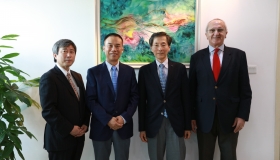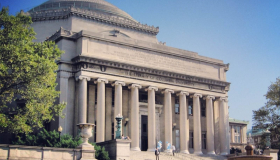香港中文大学(深圳)经管学院2015-2016年大事记
编者按
2015年以来,香港中文大学(深圳)经管学院在学校领导的鼎力支持和熊伟院长身先士卒的带领下,无论是教授们的科研成果还是在院学生的成长和发展方面,都取得了长足进步。新年伊始,我们对过去两年的成绩做一个简单回顾,以此激励大家励精图治,在2017年推动学院各项工作更进一步,再创辉煌。
尽管成立时间不长,学院的师资队伍还处于不断完善的过程中,经管学院的教授们已经在学术研究中崭露头角,取得瞩目成绩。过去两年我院教授有25篇论文被国际著名期刊接受和发表,其中有超过10篇论文发表在经管类的顶级国际期刊Quarterly Journal of Economics, American Economic Review, Review of Financial Studies, Journal of International Economics, Journal of Monetary Economics, Management Science, Academy of Management Journal和Journal of Economic Theory等等。
不仅论文发表的数量和质量引人注目,经管学院教授们的研究成果也得到了同行们的高度认可和好评。其中熊伟教授由于卓越的研究成果,2016年成为全球最顶尖金融期刊Journal of Finance的主编。这是历史上第一次由华人担任该期刊的主编,是全体华人经济和金融学者的骄傲。王健教授2015年在Journal of International Economics上发表的论文最近获得了我国国际金融领域的最高奖—浦山世界经济学优秀论文奖。2016年王健教授和余剑峰教授的金融论文也获得了芝加哥量化金融协会亚洲区(Chicago Quantitative Alliance-Asia)优秀论文一等奖。此外,经管学院教授还主持和参与了4项国家自然科学基金项目,分别研究共享信息对公司产品供应链的影响,中国影子银行的宏微观后果以及我国企业风险敞口和供应链金融的关系等重大经济金融问题。2016年佟世璐教授由于出色的审稿工作,获得了供应链管理类顶级期刊(Production and Operations Management Journal)优秀审稿人奖。
过去两年,在熊伟院长的带领和支持下,港中大(深圳)经管学院的学术研究氛围得到快速的凝聚和发展。经管学院先后和普林斯顿大学,国际货币基金组织(IMF),美国国家经济研究局(NBER)和美联储旧金山联邦储备银行(The Federal Reserve Bank of San Francisco)等顶级大学和国际机构联合举办了多次国际学术会议。这些会议的参会者不仅包括了普林斯顿大学,哥伦比亚大学,宾夕法尼亚大学和威斯康星大学等全球顶尖大学的教授,还有来自国际货币基金组织(IMF),美联储,加拿大央行,英国央行等著名国际研究和政策机构的高级研究和管理人员。除了大型学术国际学术会议,经管学院每周也安排了活跃的学术交流活动。仅在2016年秋季,就有超过20名来自世界各地的教授和学者在经管学院举行了学术讲座,和学院的师生交流最新研究成果。
秉承港中大博文约礼,中西结合的精神,经管学院招聘了毕业于全球著名高校的博士生作为教授。通过采用全英文教学和开放式的教学理念,教授们在日常教学中悉心引导学生们的全面发展。经管学院也积极为学生们提供多样的课外活动指导。在这种环境下,很多学生不仅可以兼顾在校的学业,还积极参加各种国际交换学习和社会实践活动。经过几年的学习和成长,经管学院的学生素质得到突破性进展。我们的大二大三学生在国内外各种商业案例比赛中,往往力压来自其他著名高校的大四学生甚至研究生,频传佳绩。比如在中日韩大学生商业案例竞赛,浦江杯商业案例竞赛和CFA商业案例竞赛等国内外重要比赛中,经管学院的学生多次力拔头筹,给评委和参赛对手留下深刻印象。
我们相信,在学校领导的支持下,全院师生的共同努力下和学生家长的无私帮助下,经管学院在2017年会进一步破浪前行,蓬勃发展!
1. 2015-2016年经管学院教授在国际顶级期刊发表或接受的论文
a) Baron, M., Xiong, W., Credit Expansion and Neglected Crash Risk. Quarterly Journal of Economics, forthcoming.
By analyzing 20 developed countries over 1920–2012, we find the following evidence of overoptimism and neglect of crash risk by bank equity investors during credit expansions: 1) bank credit expansion predicts increased bank equity crash risk, but despite the elevated crash risk, also predicts lower mean bank equity returns in subsequent one to three years; 2) conditional on bank credit expansion of a country exceeding a 95th percentile threshold, the predicted excess return for the bank equity index in subsequent three years is -37.3%; and 3) bank credit expansion is distinct from equity market sentiment captured by dividend yield and yet dividend yield and credit expansion interact with each other to make credit expansion a particularly strong predictor of lower bank equity returns when dividend yield is low.
b) Garleanu, N., Panageas, S., Yu, J. (2015). Financial Entanglement: A Theory of Incomplete Integration, Leverage, Crashes, and Contagion. American Economics Review, 105: 1979-2010.
We propose a unified model of limited market integration, asset-price determination, leveraging, and contagion. Investors and firms are located on a circle, and access to markets involves participation costs that increase with distance. Due to a complemen- tarity between participation and leverage decisions, the market equilibrium may exhibit diverse leverage and participation choices across investors, even though investors are ex-ante identical. Small changes in market-access costs can cause a change in the type of equilibrium and lead to discontinuous price changes, de-leveraging, and portfolio- flow reversals. Moreover, the market is subject to contagion, in that an adverse shock to investors in a subset of locations affects prices everywhere.
c) Jia, C., Wang, Y., Xiong, W. Market Segmentation and Differential Reactions of Local and Foreign Investors to Analyst Recommendations. Review of Financial Studies, forthcoming.
This paper uses segmented dual-class shares of Chinese firms—A shares traded in mainland China by local investors and H shares traded in Hong Kong by foreign investors—to document a rich pattern in the differential reactions of local and foreign investors to analyst recommendations. This pattern reveals that social connections between analysts and investors affect investor reactions to analyst recommendations. Because of the investors’ differential reactions, analyst recommendations may exacerbate, rather than attenuate, the market segmentation between the two share classes. (JEL G02, G15)
d) Hirshleifer, D., Li, J., Yu, J. (2015). Asset Pricing in Production Economies with Extrapolative Expectations. Journal of Monetary Economics, 76: 87-106.
Introducing extrapolative bias into a standard production-based model with recursive preferences reconciles salient stylized facts about business cycles (low consumption volatility, high investment volatility relative to output) and financial markets (high equity premium, volatile stock returns, low and smooth risk-free rate) with plausible levels of risk aversion and intertemporal elasticity of substitution. Furthermore, the model captures return predictability based upon dividend yield, Q, and investment. Intuitively, extra- polative bias increases the variation in the wealth–consumption ratio, which is heavily priced under recursive preferences; adjustment costs decrease the covariance between marginal utility and asset returns. Empirical support for key implications of the model is also provided.
e) Nam, D., Wang, J. (2015). The Effects of Surprise and Anticipated Technology Changes on International Relative Prices and Trade. Journal of International Economics, 97: 162-177.
This paper argues that it is important to distinguish surprise and anticipated components of total factor productivity (TFP) when we study the international transmission of TFP shocks. We document that surprise and anticipated shocks to US TFP induce distinct dynamics for international relative prices (the real exchange rate and the terms of trade) and international trade. These findings are robust under two fundamentally different identification methods. Our empirical findings can reconcile some conflicting empirical results in the literature and hence lead to a better understanding of the international transmission of TFP shocks. We evaluate a standard international macroeconomic model using our empirical results. The model cannot generate the documented dynamics of international relative prices, though it can replicate the dynamics of other variables relatively well. Anticipated TFP shocks are also found to contribute more than surprise TFP shocks to real exchange rate movements lending support to the studies of exchange rates as asset prices.
f) Wang, J., Wang, X. (2015). Benefits of Foreign Ownership: Evidence from Foreign Direct Investment in China. Journal of International Economics, 97(2): 325-338.
To examine the effect of foreign direct investment, this paper compares the post-acquisition performance changes of foreign- and domestic-acquired firms in China. Unlike previous studies, we investigate the purified effect of foreign ownership by using domestic-acquired firms as the control group. After controlling for the acquisition ef- fect that exists in domestic acquisitions, we find no evidence that foreign ownership can bring additional produc- tivity gains to target firms, though both foreign and domestic acquisitions bring productivity improvements to target firms. In contrast, a strong and robust finding is that foreign ownership significantly improves target firms' financial conditions and exports relative to domestic-acquired firms. Foreign acquisition is also found to improve output, employment and wages for target firms. These findings conflict with the conventional view of productivity-driven FDI and highlight the financial channel through which FDI benefits the host countries.
g) Shen, J., Yu, J., Zhao, S. Investor Sentiment and Economic Forces, Journal of Monetary Economics, forthcoming.
Economic theory suggests that pervasive factors (such as market returns and consumption growth) should be priced in the cross-section of stock returns. However, our evidence shows that portfolios with higher risk exposure do not earn higher returns when using portfolios formed directly on individual stock’s exposure to a broad set of macro-related factors. More important, our evidence shows a striking two-regime pattern for all 10 macro-related factors: high-risk portfolios earn significantly higher returns than low-risk portfolios following low-sentiment periods, whereas the exact opposite occurs following high-sentiment periods. These findings are consistent with a setting in which market-wide sentiment is combined with short-sale impediments and sentiment-driven investors undermine the traditional risk-return tradeoff, especially during high-sentiment periods.
h) Shang, W., Ha, A., and Tong, S. (2016). Information Sharing in a Supply Chain with a Common Retailer. Management Science, 62(1): 245-263.
We consider the problem of sharing retailer’s demand information in a supply chain with two competing manufacturers selling substitutable products through a common retailer. We examine several scenarios with either the retailer or the manufacturers as leaders in offering information (sharing) contracts. We show that a larger production diseconomy or higher competition intensity induces more information sharing. The retailer may benefit from a larger production diseconomy, which is not possible without information contracting. Information contracting always benefits the retailer, and the benefit is larger when she offers contracts sequentially rather than simultaneously to the manufacturers. Information contracting benefits the manufacturers only when they offer the contracts and production diseconomy is large. When either demand uncertainty or production diseconomy is large, the retailer invests more in improving information accuracy. When competition is more intense, she invests more except under some conditions that we fully characterize.
i) Shum, S., Tong, S., and Xiao, T. On the Impact of Uncertain Cost Reduction when Selling to Strategic Customers. Management Science, forthcoming.
Many products undergo cost reductions over their product life cycles. However, strategic customers may have more incentive to wait if they expect a cost reduction to lead to a price drop. A firm that does not face any uncertainty can use pricing strategies such as price commitment and price matching to alleviate the strategic waiting of customers. However, these pricing strategies provide less flexibility than dynamic pricing for a firm facing uncertainty. In this paper, we examine the impact of cost reduction under dynamic pricing, price commitment, and price matching when cost reduction can come from production learning or from technology advancement. The firm makes pricing decisions when facing uncertainty in future cost, and strategic customers decide whether to wait when facing uncertainty in future price. We show that in general the firm’s profit is higher when future cost is more uncertain, but not necessarily when cost reduction is more significant. In addition, production learning and technology advancement can have opposite effects on the optimal pricing decisions and the choice of pricing strategy.
j) Song, Y. (2016). Social Learning with Endogenous Observation. Journal of Economic Theory, 166: 324-333.
I study the problem of social learning in a model where agents move sequentially. Each agent receives a private signal about the underlying state of the world, observes the past actions in a neighborhood of individuals, and chooses her action attempting to match the true state. In contrast to the most existing literature that assumes an exogenous observation structure, observation in this paper is endogenous. More specifically, each agent must pay a cost to make any observation and can strategically choose the set of actions to observe. I show that when private beliefs are strong relative to cost, observation becomes fully informative if and only if the size of the observed actions extends to infinity. In addition, costly observation may lead to better learning than free observation, and the order of acquiring signal and observation significantly affects the learning pattern.
k) Schaar, M., Song, Y. (2015). Dynamic Network Formation with Incomplete Information. Economic Theory, 59(2): 301-331.
How do networks form and what is their ultimate topology? Most of the literature that addresses these questions assumes complete information: agents know in advance the value of linking to other agents, even with agents they have never met and with whom they have had no previous interaction (direct or indirect). This paper addresses the same questions under what seems to us to be the much more natural assumption of incomplete information: agents do not know in advance – but must learn – the value of linking to agents they have never met. We show that the assumption of incomplete information has profound implications for the process of network formation and the topology of networks that ultimately form. Under complete information, the networks that form and are stable typically have a star, wheel or core-periphery form, with high-value agents in the core. Under incomplete information, the presence of positive externalities (the value of indirect links) implies that a much wider collection of network topologies can emerge and be stable. Moreover, even when the topologies that emerge are the same, the locations of agents can be very different. For instance, when information is incomplete, it is possible for a hub-and-spokes network with a low-value agent in the center to form and endure permanently: an agent can achieve a central position purely as the result of chance rather than as the result of merit. Perhaps even more strikingly: when information is incomplete, a connected network could form and persist even if, when information were complete, no links would ever form, so that the final form would be a totally disconnected network. All of this can occur even in settings where agents eventually learn everything so that information, although initially incomplete, eventually becomes complete.
l) Lin, B., Law, K. S., Zhou, J. (2016). Why Is Underemployment Related to Creativity and OCB? A Task Crafting Explanation of the Curvilinear Moderated Relations. Academy of Management Journal, in press.
Based on the job crafting perspective, we theorized a serial curvilinear mediated moderation model that links underemployment to two outcomes that benefit the organization: creativity and organizational citizenship behavior. A three-waved time-lagged survey in teachers and a field study in technical workers provided convergent support of this model. In Study 1, using data from 327 teachers and their immediate supervisors, we found support for our hypotheses that perceived underemployment had an inverted U-shaped relationship with task crafting and that this relationship was moderated by organizational identification. When the teachers' organizational identification was high, they engaged in more task crafting for the organization at intermediate levels of perceived underemployment. We also found that task crafting was positively related to creativity and organizational citizenship behavior. In Study 2, the simulation tasks for 297 technical workers provided convergent evidence for that objective underemployment indirectly influence objective task crafting through perceived underemployment with the inverted U-shaped path from perceived underemployment to task crafting. We discussed the theoretical and practical implications of this research.
2. 2015-2016年经管学院教授获奖和参与主持的国家级科研项目
王健教授
a) 中国国家自然科学基金和英国研究基金(经济和社会科学基金项目)联合课题(基金编号:71661137005, 169.6万人民币):影子银行与中国经济:一个从微观到宏观的分析框架
b) 中国国家自然科学基金课题(基金编号: 71473040,60万人民币):基于CGE模型分析非关税性壁垒对中国加入TPP的宏观经济后果
c) 浦山世界经济学优秀论文奖
王健教授和余剑峰教授
2016年芝加哥量化金融协会亚洲区(Chicago Quantitative Alliance-Asia)优秀论文一等奖
佟世璐教授和谢聪教授
中国国家自然科学基金课题(基金编号: 71671157):竞争环境下如何在供应链分析需求信息
汪晓樵教授
国家自然科学基金青年项目,“上下游关系专用性投资对企业风险敞口及供应链金融的微观影响”,项目批准号71602087
佟世璐教授
2016年Production and Operations Management Journal 优秀审稿人奖
3. 2015-2016年经管学院主办的重要国际会议
SME has hosted several high-profile academic symposiums with top financial institutions across the world:
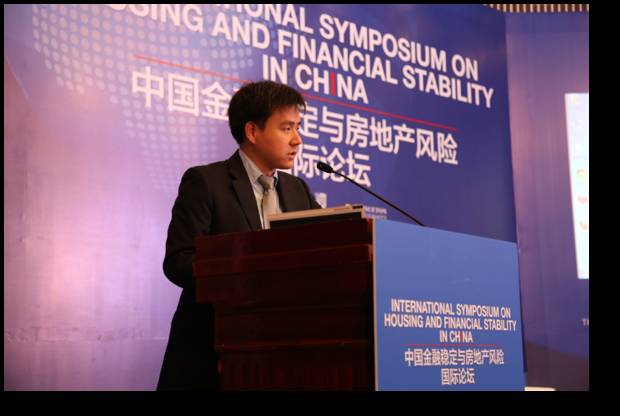
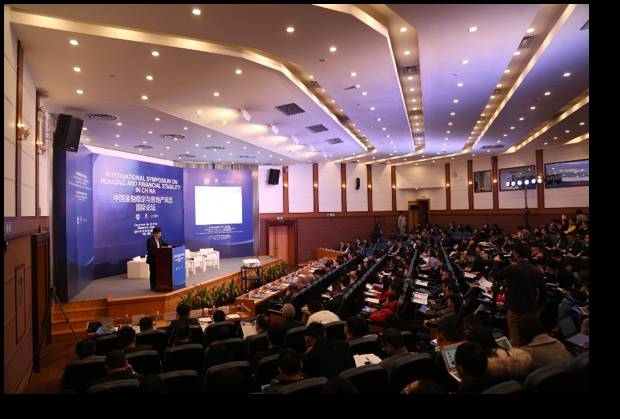
In Dec. 2015, SME, together with the International Monetary Fund and Princeton University, hosted the International Symposium on Housing and Financial Stability in China.
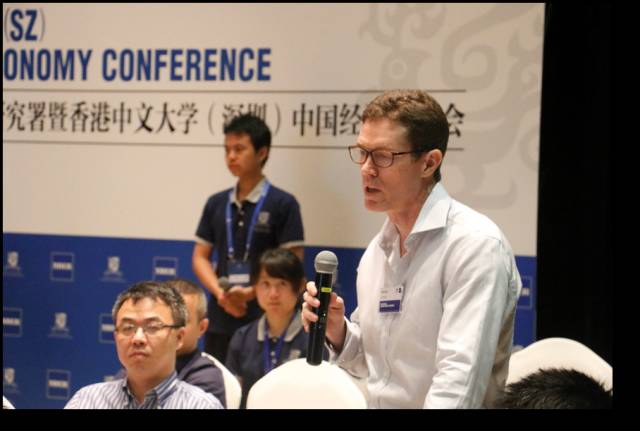
In May 2016, SME, together with the National Bureau of Economic Research of the U.S., hosted the Chinese Economy Meeting.
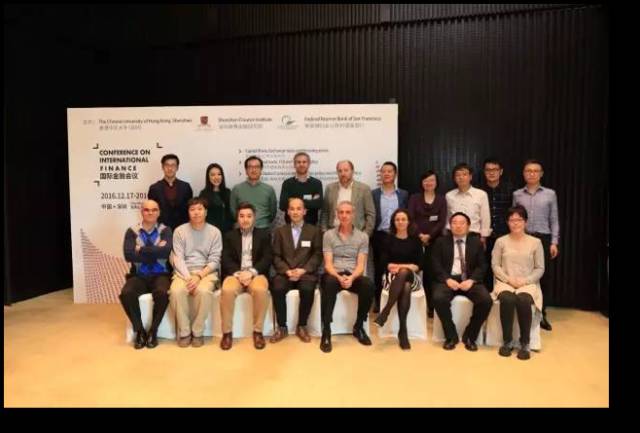
In Dec. 2016, SME, together with the Federal Reserve Bank of San Francisco, hosted the International Finance Conference.
4. 2015-2016年经管学院学生在国内外商业竞赛获奖
2016年12月25日,CFA协会全球投资分析大赛(CFA Institute Research Challenge)(华南赛区冠军及三等奖,韦思力获“最佳个人”奖)
2016年12月19日,2016“万人之上”中国大学生金融挑战赛全国总决赛(亚军)
2016年8月28日,第十四届OVAL中日韩大学生商业创意大赛总决赛(OVAL International Business Contest for Students)(经管学院2014级学生唐璐季军,经管学院2015级学生王芷丹最佳参赛选手)
2016年5月28日,第一届 “浦江杯全国大学生未来商业领袖案例分析大赛”决赛 (冠军)
2015年10月31日,2015“万人之上”中国大学生金融挑战赛全国总决赛(季军)

